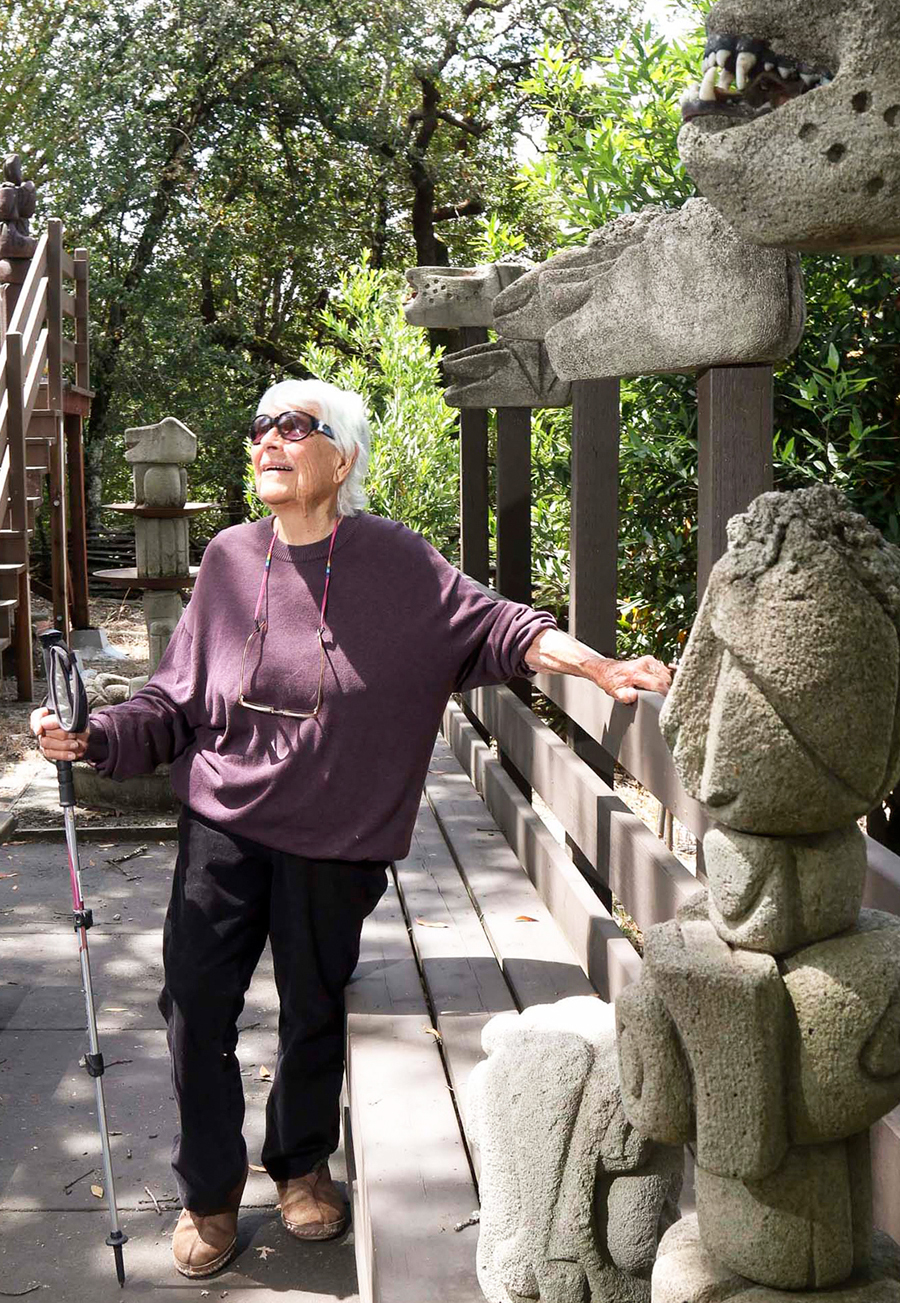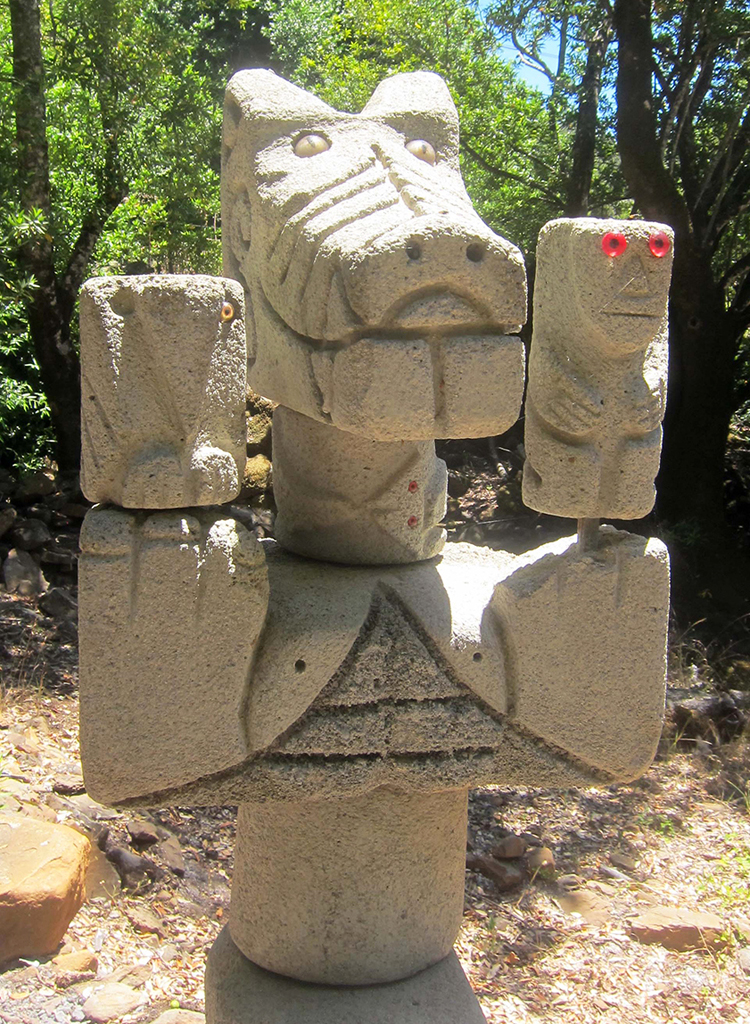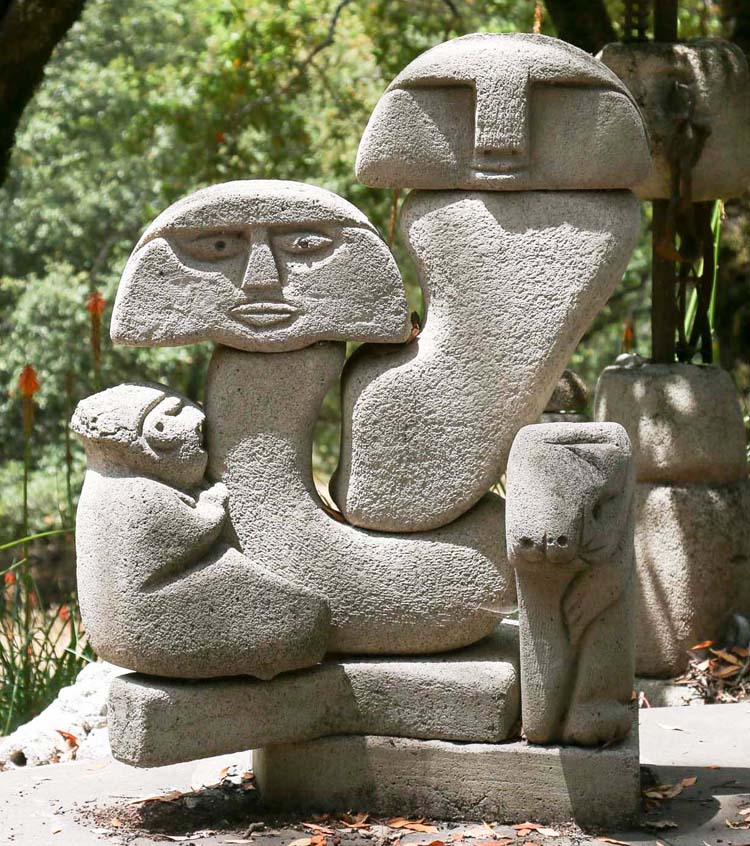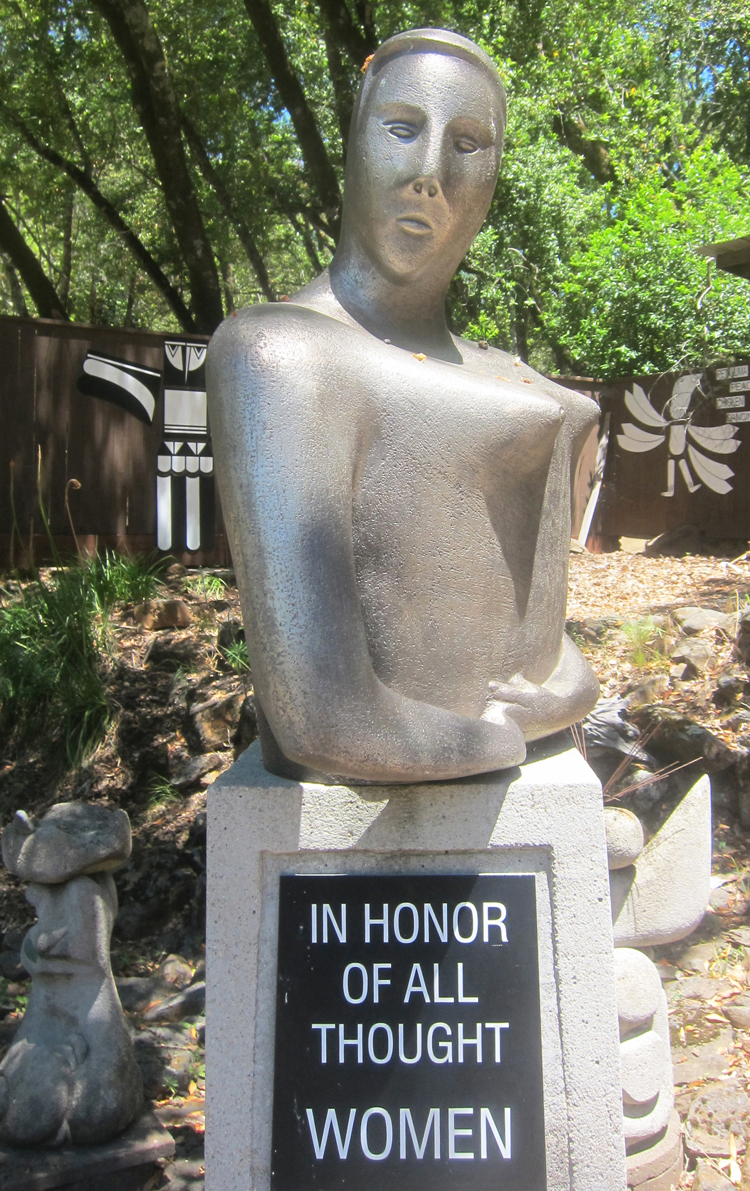Fierceness Within - Page 4
 |
|
|
 |
 |
|
|
 |
|
|
Her later work shows an evolution from her earlier sculpture, with an added toughness, at times, or a deeper dollop of whimsy.
While Mary often features animals in her work—she's always loved cats—hers are often more menacing than cute, and more often totemic. The look of her work owes a bit to early Henry Moore, she has said, but more to pre-Columbian and African art.
"I respond to the weightiness, the objectivity, the concreteness of their art, and strive for it in my own," she told San Francisco Magazine in 1977. "I respond to toughness, strength, and hardness in people and in art."
She showed her work in galleries and fairs and taught art. About a 1971 show of her work at Sonoma State University, critic Ada Garfinkel of the Marin Independent Journal wrote, "in her most compelling work it is the quality of fierceness that is so arresting."
Fuller achieved her greatest commercial success starting in the 1970s, creating public sculptures and large private commissions in San Francisco, San Jose, Petaluma, Yuba City, even on Cape Cod. Many were funded thanks to new laws requiring developers to spend a percentage of the cost of their jobs on public art. It also helped that she was a woman, Mary says, because sponsors wanted to hire minorities and women.
She appreciated the cash that came with public commissions. One Los Angeles job brought in $70,000, she told oral historian Susan Landauer. "Even when you figure all your expenses and everything, that's not too sleazy."
Fuller says her public art is among the most satisfying for other reasons too.
"The kind of interaction between artists, who tend to become isolated in their own little, rather special world, and the people who are actually going to live with the work, can be very beneficial to both parties, it seems to me," she told the Petaluma Argus-Courier in 1979.
"If we're going to have a culturally viable art, not just a hothouse variety for an elite, or schlock and kitsch for the rest of us, this exchange must be encouraged."
She told San Francisco Magazine in 1977: 'I like the monumentality of outdoor sculpture—the space, the way the light changes. I like the seasons, the growth, the leaves, and birds. My things become organically involved with their settings, and I feel a closeness and respect for nature."
About leaving her longtime home, where her sculptures truly have blended with their wildland setting, Mary has no regrets. The buyers are friends and neighbors, both of them artists, she says. "I know the whole family," she says. "I'm very comfortable. Personally it's the best that could have happened."
Photography: David Toerge, Dave Weinstein; and courtesy Mary Fuller McChesney
• For information about Mary Fuller McChesney's art, visit the Calabi Gallery in Santa Rosa: CalabiGallery.com.
- « first
- ‹ previous
- 1
- 2
- 3
- 4




